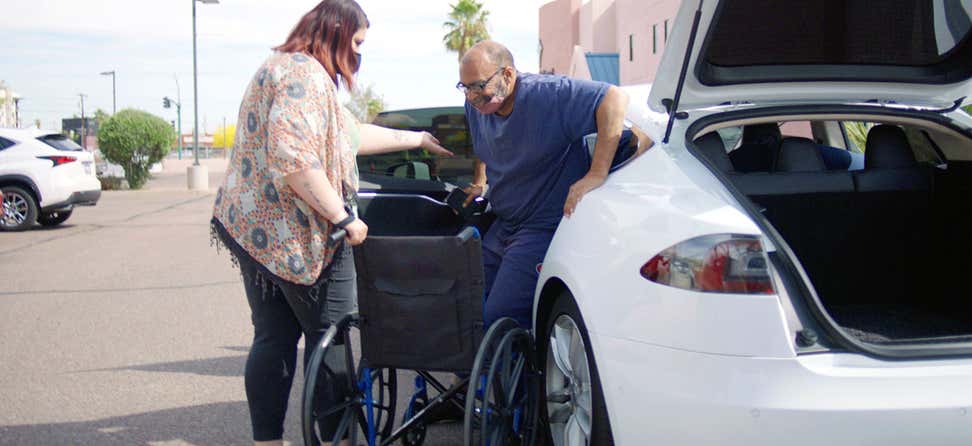Key Takeaways
A survey of low-income older adults found that many lacked knowledge about key benefits programs, such as Medicare Savings Program and LIHEAP.
Outreach messages focused on living on a fixed income resonated best with older adults on a budget.
Despite increasing use of social media, older adults still get their trusted news from national and local television.
What compels low-income older adults to learn about and apply for public benefits they may be missing out on? Where do older adults get their trusted information? Understanding the answers to these questions is essential to ensuring that aging network organizations are able to effectively reach out to and enroll these individuals into benefits.
In 2016, NCOA hired M+R and PerryUndem Research/Communication to help us find the answers. PerryUndem conducted a national telephone survey of over 1,000 adults aged 60+ with incomes below 250% of the federal poverty line to gauge their attitudes about benefits programs that can help them make ends meet. They also conducted eight focus groups in four cities across the U.S. in September 2016, with participants from the same demographic, to see how older adults would react to different types of messaging and ad campaigns related to benefits programs.
Knowledge about public benefits programs
While most participants had heard of major public programs such as Medicare, Medicaid, and SNAP/Food Stamps, fewer than half were aware of other programs that help older Americans:
- Medicaid (or similar state program) - 79% aware of this program
- SNAP (or Food Stamps) - 79%
- Medicare Part D Extra Help/Low-Income Subsidy - 78%
- Low Income Home Energy Assistance Program (or similar program to pay heating/cooling costs) - 51%
- Medicare Savings Program - 24%
Barriers to participation
Researchers asked older adults to identify reasons why older adults might not apply for these benefits programs. The respondents identified four key barriers to participation. 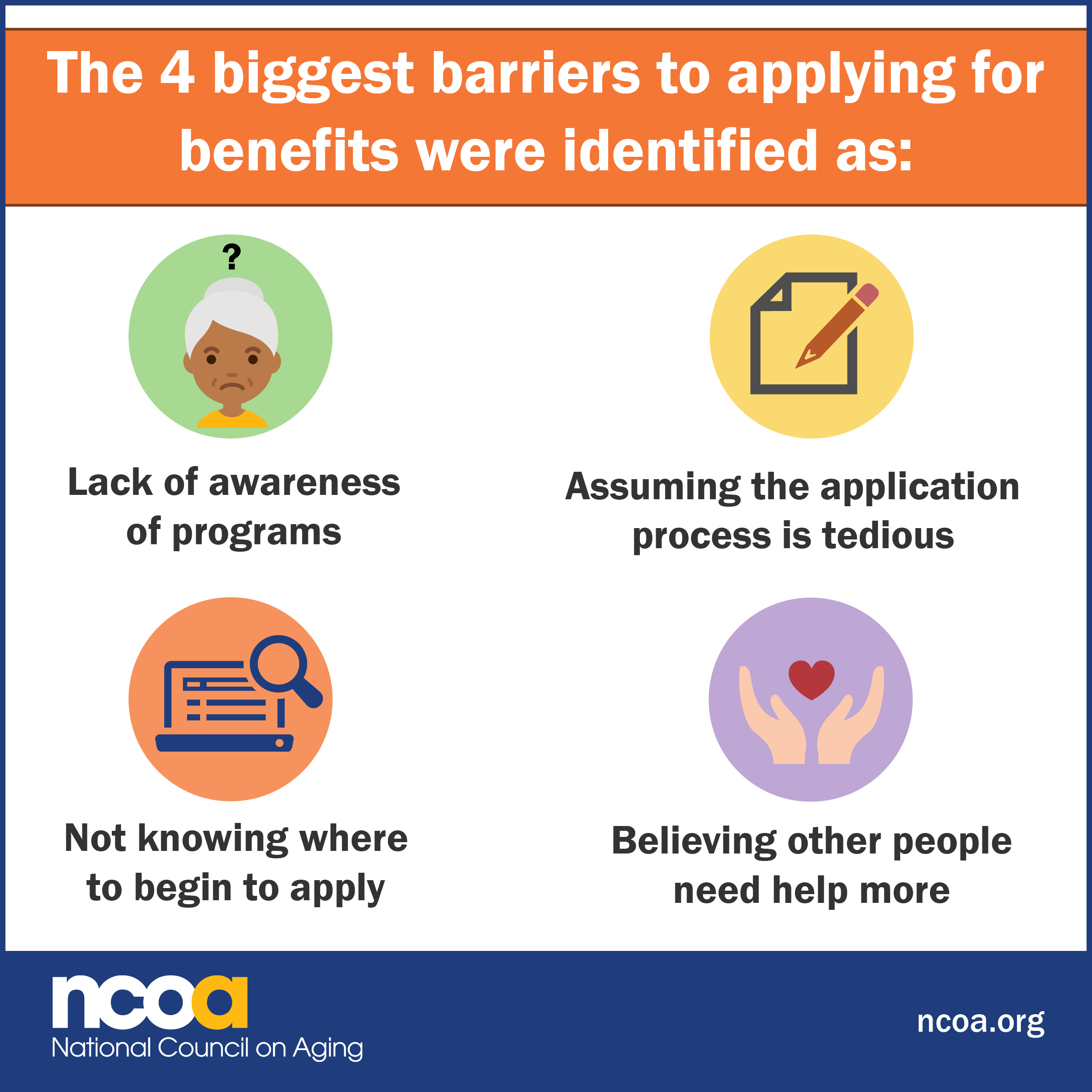
Trusted sources of information
To identify where benefits outreach may be most successful, the survey asked respondents about where they get their news and trusted information. Traditional media continues to come out on top, with local TV news being the most accessed source of news. 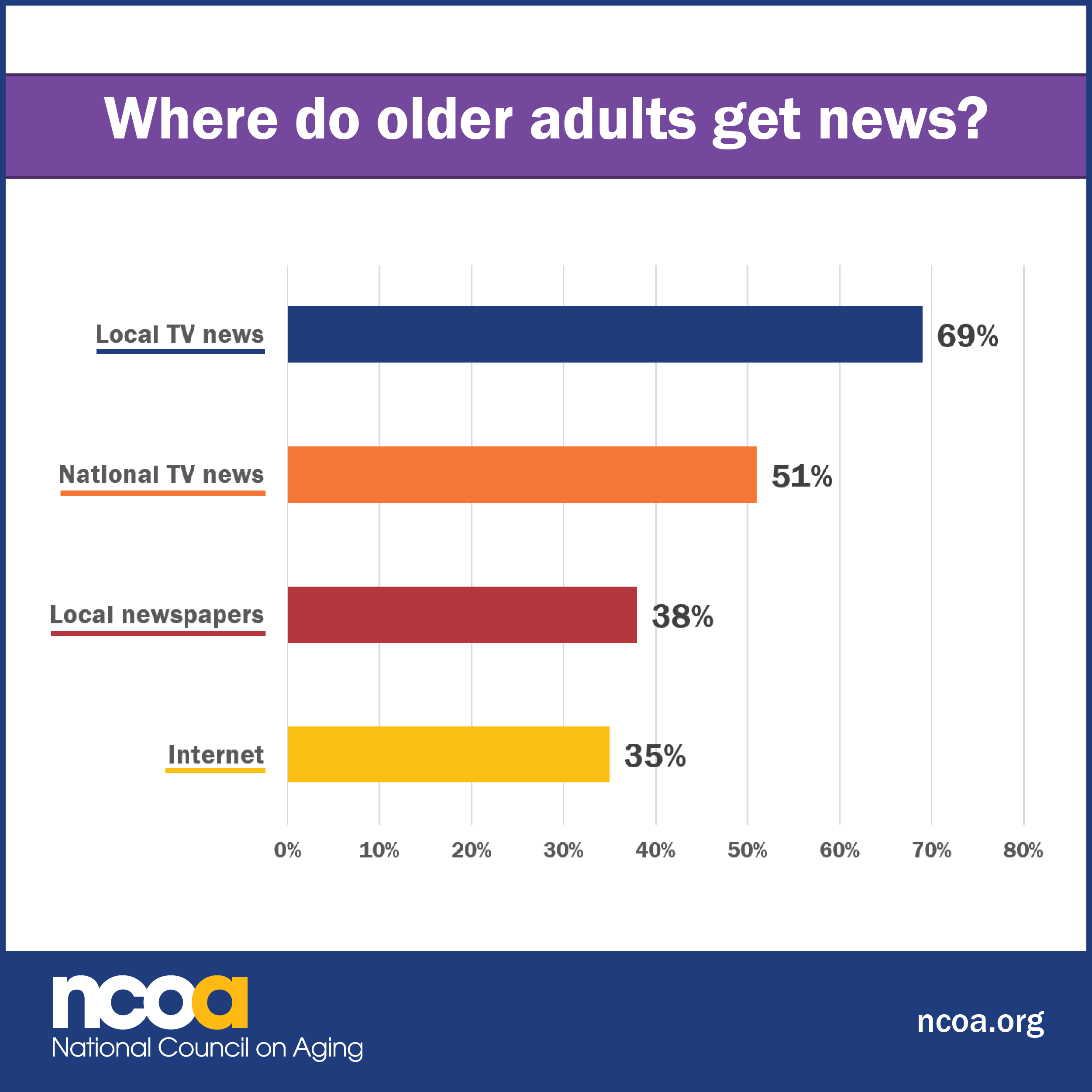 Among the top trusted sources of information, Medicare, Social Security, and health care providers top the list.
Among the top trusted sources of information, Medicare, Social Security, and health care providers top the list. 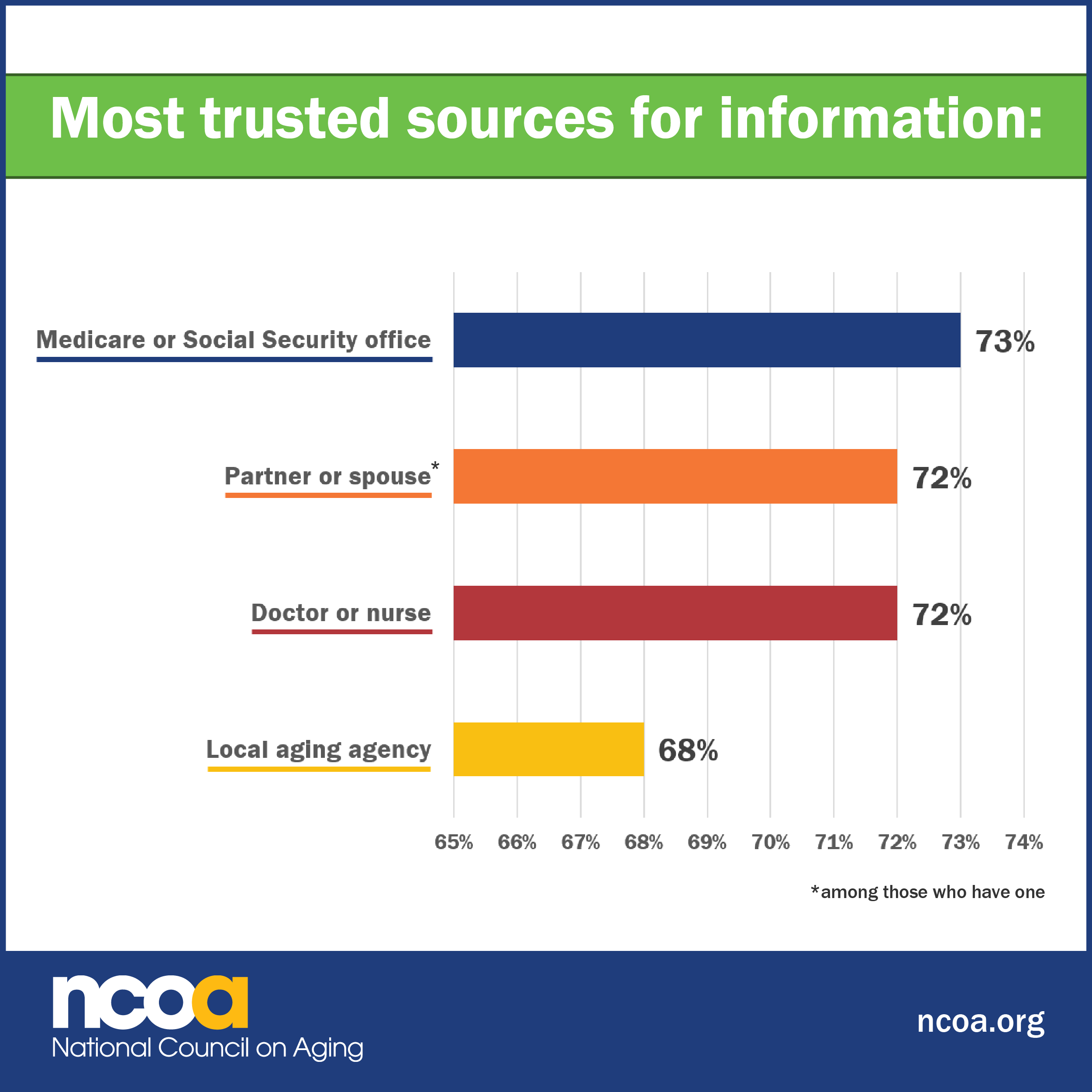
Other vehicles to consider for outreach include:
- Internet - 70% are daily users
- Adult children - 58% talk to weekly
- Facebook - 52% are weekly users
- Religious services - 30% attend weekly
Interest in benefits programs
About six in 10 survey respondents expressed interest in benefits programs, and interest was fairly uniform across all program types: food, health care, heating and cooling bills, and prescription drugs. 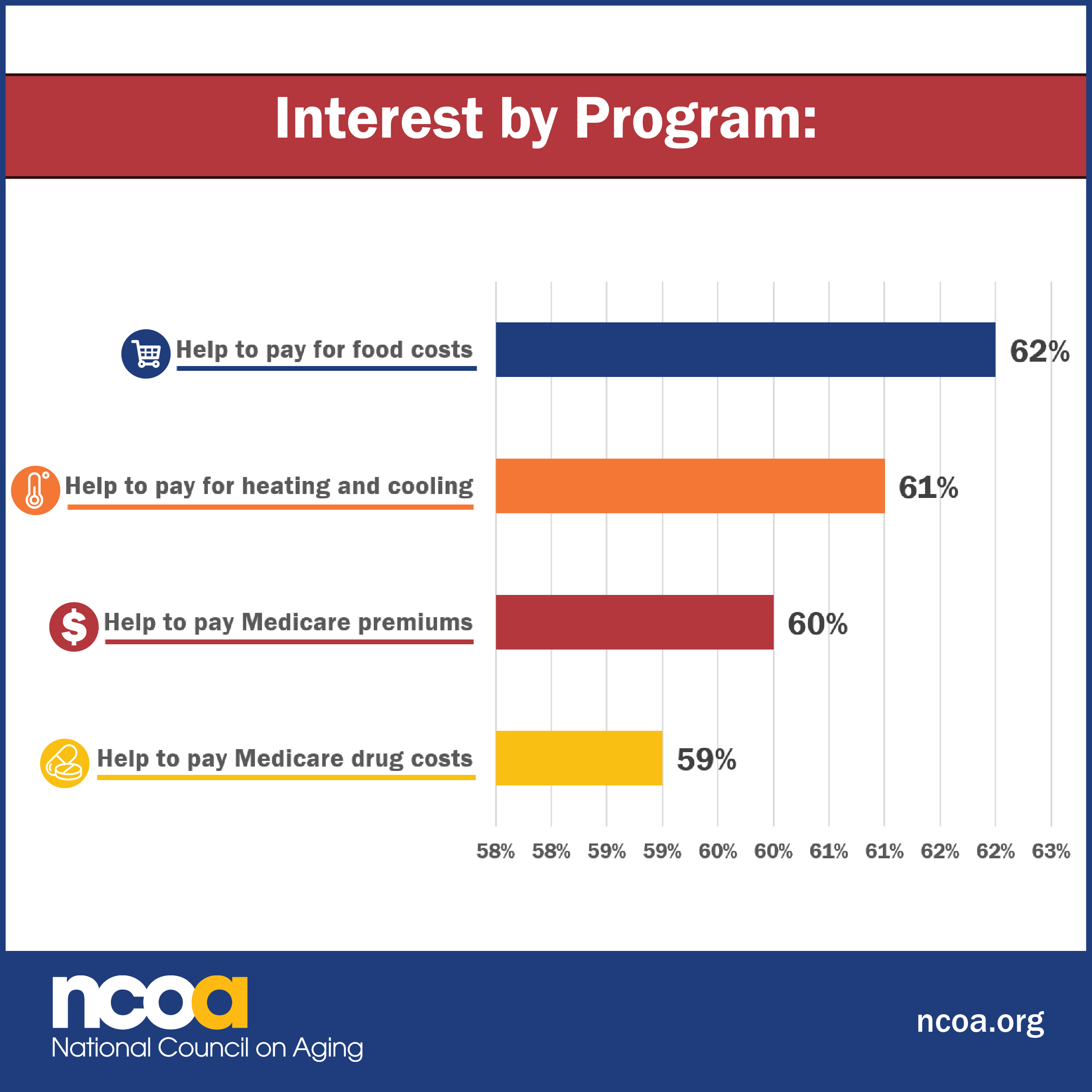 The researchers also gauged who is very interested and likely to look into program eligibility. This "Most Ready to Apply" group made up 32% of the market and included the following:
The researchers also gauged who is very interested and likely to look into program eligibility. This "Most Ready to Apply" group made up 32% of the market and included the following:
- More women than men - 58% v. 42%
- The youngest age cohorts - 71% are in their 60s
- Racial/ethnic breakdown:
- 63% White
- 15% African American
- 13% Latino
- 7% Asian
- Unmarried older adults - 76%
- Those with the lowest incomes - 83% have incomes under 150% FPL
- A higher proportion of Southerners:
- 43% from the South
- 22% from the Northeast
- 22% in the Midwest
- 13% in the West
Messages that work
PerryUndem identified several successful messages that the respondents said would make them want to learn more about and see if they qualify for these programs. These messages were later tested and refined in focus groups, and used in a pilot campaign that M+R helped conduct on behalf of NCOA. In terms of advertising, a more straightforward approach that focused on “fixed income” and cost of living was the most effective concept across the focus groups.
The #1 message was… “Help for people on fixed incomes is important because the cost of living goes up, but our incomes do not.”
Other important messages that resonated with respondents included:
- Money for groceries can make it easier to eat healthy food and prevent getting sick.
- Help with prescription drugs can save up to $4,000 a year.
- Help can mean less worry and stress about making ends meet.
The least effective ads tested used humor and failed because participants could not quickly see the link between the concept and getting help.
Tips for conducting outreach
Based on survey responses, it’s clear that respondents still felt unsure or hesitant about applying for help, meaning that proactive outreach is key! Here are some other key findings to guide your approach.
- Adults in their 60s are a VIP target. Respondents aged 60 to 69 tended to be most interested and likely to apply for benefits. The good news is this segment may also be easiest to reach: 82% are daily internet users and 67% are weekly Facebook users. Focusing on this age cohort may also translate into higher enrollment numbers as they grow older.
- Conversely, older targets (80+) may be the hardest to reach. For this group, focus initial messaging on help to stay independent. Work through family members, health care systems, and religious institutions. Consider ways to address internal stigma and concerns about sharing information. Also address barriers around paperwork and hassle. Consider approaching them with the program that has the easiest application process. In the focus groups, many expressed hesitation to enroll when they thought it was going to be a long, difficult process.
Our partners at M+R presented a webinar on these findings and a subsequent Facebook ad pilot campaign we tested in 2017. Watch the recording below and access the slides.






